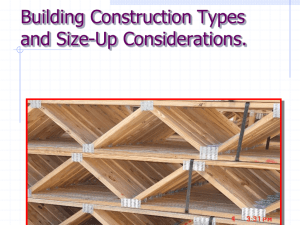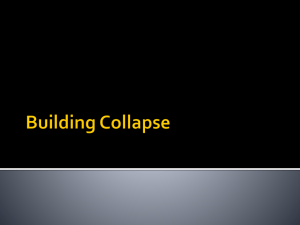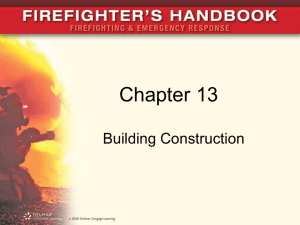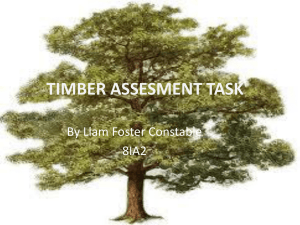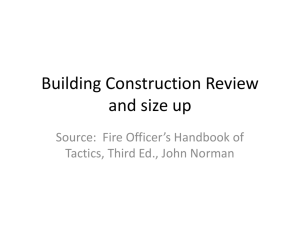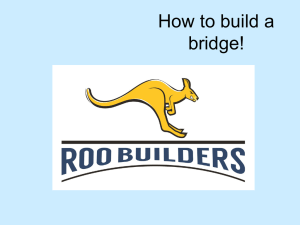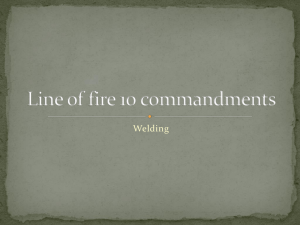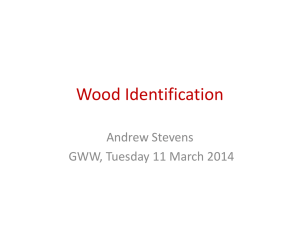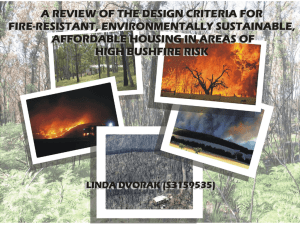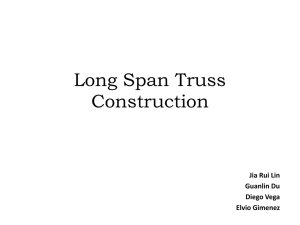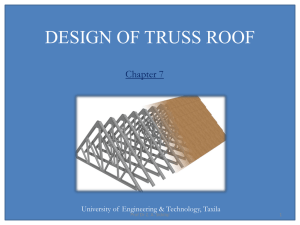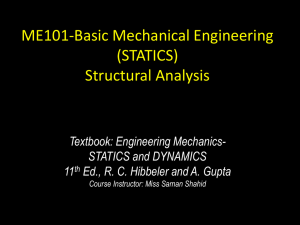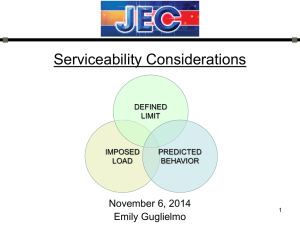safety officer
advertisement
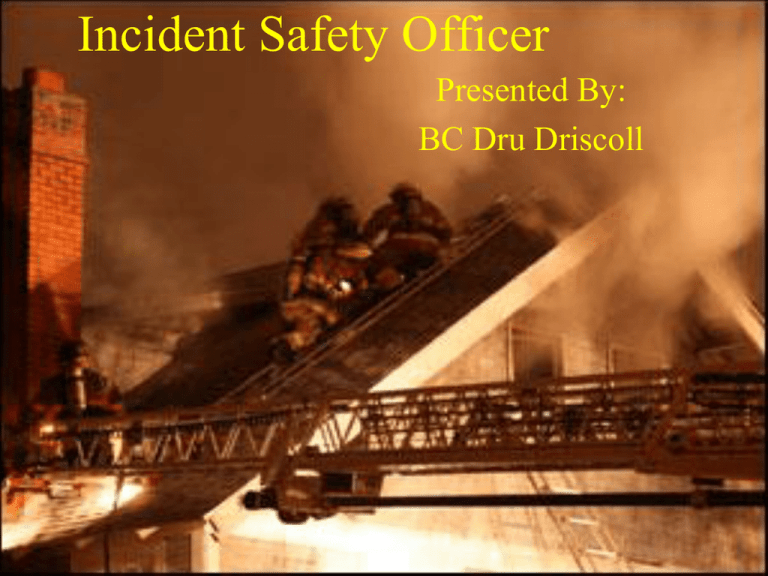
Incident Safety Officer Presented By: BC Dru Driscoll Incident Safety Officer The eyes and ears for both the incident commander and the firefighters The Effective Safety Officer • Has good communication skills • Good understanding of the responsibilities of the position • Has sincere attitude towards safety • Can be viewed as a role model • Ability to recognize potential hazards • Must understand risk management Recommended Qualifications (NFPA 1521 Chap. 4) • Fire Officer I – NFPA 1021 • Have and maintain knowledge, skill and abilities to manage incident scene safety • Knowledge of safety and health hazards involved in emergency operations • Have knowledge of building construction • Knowledge in the use of departments personnel accountability system • Knowledge of incident scene rehabilitation Functions of the Safety Officer • Provides current information about the scene to the IC • Consults with the IC on matters concerning safety • Can alter, suspend or terminate life threatening operations if required • Keep current PAR • Monitor all radio traffic Functions of the Safety Officer • Participates in the Incident Action Plan • Watches fire ground activities for general safety issues. • Don’t be a “Bunker Gear Cop” • Monitor building conditions • Practice Risk Management Bunker Gear Cop • At every incident there are gear issues that need to be corrected! • Focusing on gear issues alone will make you lose your authority on scene • Correct issues with the individual, not the crew. Risk Management Classic Risk Management • Identify Hazards: Primary function of the ISO. Always monitoring the fire ground. • Evaluate Hazards: based on Severity and Frequency • Prioritize Hazards: Highest chance for most severe situation • Control Hazards: Incident mitigation • Monitor Hazards: Revisit and adapt to the hazards as time goes on. READING BUILDINGS Understanding Building Construction Building Construction • Important to Understand Theories and Principles Involved. • Know The Early Warning Signs Of Structure Failure And Collapse Potential • “Undress The Building” Building Construction – Why? • To Give I/C and Safety Officers an edge in planning for a safe and effective fire attack. • To alert ISO’s to potential hazards presented by a particular type of construction. • To alert ISO’s to the effects of fire and fire suppression activities on selected building materials Building Components • Column: A structural member that is loaded in Compression • Beam: A structural member that transmits a load perpendicular to the load • Girder: A beam that supports other beams • Lintel: A beam that supports the load above an opening in a wall • Truss: A beam that uses triangle struts and ties to attach a top and bottom chord, simulating a solid beam • Wall: Essentially a long narrow column Forces Applied • Compression: Both ends being pushed together. (ex. Column) • Tension: Pulling of the ends (ex. Top of a beam) • Shear: Forces occur in both directions. Two parallel members connected that want to slip past each other. Forces vs. Material Material - Compression Tension Shear Wood - marginal poor Concrete - good poor poor Reinforced Concrete - good fair fair Steel - good good good w/grain good Vertical Load Systems Concept of gravity load path • Loads must be transferred from source to ground • Walls are load bearing or Non-load bearing • Any portion destroyed by fire can create a complete building collapse • Connections usually fail first Types of Loads • • • • • • Cantilever Loads (Eccentric) Dead Loads (Axial) Live Loads (Water, People) Impact Loads (Explosive) Wind Loads (Torsional) Suspended Loads (Hood system) Construction Types • • • • • • Type I - Fire Resistive (fire proofing) Type II - Noncombustible (exposed steel) Type III - Ordinary (concrete & wood) Type IV - Heavy Timber (large mass wood) Type V - Wood Frame (lightweight wood) Unclassified - Hybrids (all the above) Key Construction Considerations • 4 Key considerations in assessing building construction in relation to fire safety – – – – Compartmentalization Building elements adding to fire load Void spaces Collapse resistance Type I – Fire Resistive • Active defense system • 3 and 4 hour fire resistive construction • Vertical enclosures • Floor to floor compartmentalization • Steel encased in concrete or with fire proofing Firefighting Tactics • Determine specific floor • Verify fire location before committing handlines • Systematic evacuation of building occupants - Begin with fire floor then work up • Address public through PA system if available • Gain control of building systems – HVAC should be shut down – Elevators under FD control – Ensure building fire pumps are working Fire Fighting Tactics • Confine and extinguish the fire – Coordination of attack and ventilation – Be aware of limited water supply – Protect exposures above the fire Fire Fighting Tactics – Type I • Fire Spread By: – Auto ignition from floor to floor movement – Through void spaces in exterior walls – HVAC systems – Vertical shafts Ventilation Considerations • • • • Vertical ventilation using stair shafts Use stair shaft that opens to the roof Don’t use the elevator shaft! Use another stairwell (unburned side) for attack operations • Horizontal ventilation is a last resort – due to disturbing the stack effect Type II – Non-Combustible Construction • • • • • • Does not contribute to the fire load Very high strength to mass ratio Fire resistance is dependant on mass No fire resistance rating Conducts heat and spreads fire High collapse potential (as early as 5 min.) Fire Fighting Tactics – Type II • Employ cooling stream tactics – Steel - 1000° expands and sags moving walls – Lw steel – Failure in as little as 5 min. • Commercial / Industrial occupancy – Large area – search techniques are critical • Fire can spread through insulated roof material • Direct additional streams to the ceiling • Ensure personnel are outside the collapse zone Type III Construction • Exterior walls and structural members of non-combustible materials • Interior structure and roof completely or partially constructed of wood • “Main Street USA” • Claimed the most Firefighter lives Have you seen a Type III building? Ordinary Construction Problems • • • • • • • Structural stability of Masonry walls Stability of columns, beams, and girders Old buildings – Several remodels Void Spaces Masonry walls prevent escape of heat / fire High fuel loads High Backdraft potential Ordinary Construction Tactical Consideration • Designed with no consideration for fire or collapse • Combustible fire gasses concentrate in voids and can cause a smoke explosion • Early vertical ventilation is needed • Roof integrity considered questionable until proven otherwise • Lay lines into adjoining buildings • Pull ceiling tiles as you go • Monitor overhead with TIC Type IV – Heavy Timber • Exterior Walls made of non-combustible materials • Interior structural members made of solid or laminated wood Heavy Timber • Exterior walls can be masonry • Columns, beams, floors, and roof are heavy timber (True mill construction) • There may be some steel in support sructure • designed to contain no void spaces • No rated fire seperations Heavy Timber Tactical Considerations • • • • Massive fuel load Serious exposure problems Consider choosing heavy streams Once structural involvement it is generally impossible to control • Connections are the weakest link Type V – Light Weight Wood Frame Combustible Balloon Frame Platform Wood Frame Combustible • The entire building is made of combustible elements • Many void spaces • May have high flame spread on wall linings • Stick frame provides resistance to sudden collapse • Less compartmentalization Truss Roof Construction Wood Frame Truss System Wood Frame Truss Warning * • Engineered wood truss system fails in less than 10 minutes • Truss is held together by gusset plates that are only 3/8” deep. • When one part fails, the whole truss fails • * Gusset Plates
